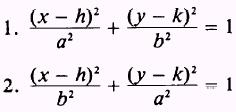- INQUIRY ACTIVITY SUMMARY
-
The first thing I did was label the triangle according to the Special Right Triangle. The hypotenuse was labeled as 2x, the horizontal side x rad3, and the vertical x. Next we had to simplify the hypotenuse to make it one. In order to do that we had to divide all three sides by 2x. As seen in the picture above we can see that when we divided x by 2x the x's canceled and it became 1/2. For the horizontal side the x's also canceled and it simplified to rad 3/2. Afterwards, I labeled the hypotenuse r, the horizontal value x, and the vertical value y. Then I drew a coordinate plane. We began by making the labeled angle side the origin (0,0). Then near the 90 angle I labeled it as ( rad3/2,0) because we moved rad 3/2 on the x axis and we didn't move any units up. The top vertices is labeled as ( rad3 /2,1/2) because we moved right rad3/2 and up 1/2.
3. Describe the 60* triangle:
This is very similar to the 30* triangle but for the 60* triangle the sides are switched. The hypotenuse still being 2x, the vertical side x radical 3, and the horizontal side as x. We first divide everything by 2x and we get a vertical side of radical 3/2, a horizontal side of 1/2, and hypotenuse of one (just like the 30* angle and after simplifying).Next we place the triangle on the first quadrant giving us ordered pairs of (1/2, radical 3\2), (1/2,0), and (0,0).
4. This activity helps me derive the unit circle because it gives me the degrees, points, and ordered pairs that are located at quadrant one of the unit circle. These three triangles are important because there reflected on the unit circle. The vertices on the top are the points used all around the circle but they have different x and y values. ( explained below)
5. The 30*,45*,and 60* triangles that we did in the activity lie on the first quadrant. Since the first quadrant is reflected on the second quadrant, the second is reflected on the third quadrant, and the third on the fourth quadrant. The values of the vertices change. In the first quadrant both values are positive, in the second quadrant the x value is negative. In the third quadrant the values of both the x and y are negative. For the fourth quadrant the y value is negative.
INQUIRY ACTIVITY REFLECTION
This activity will help me in this unit because with just knowing the ordered pairs from these three triangles, I can easily narrow down the answers for degrees that have the share reference angles.
Something I never realized before about special right triangles and the unit circle is that I can see the unit circle as triangle to find the vertices.





